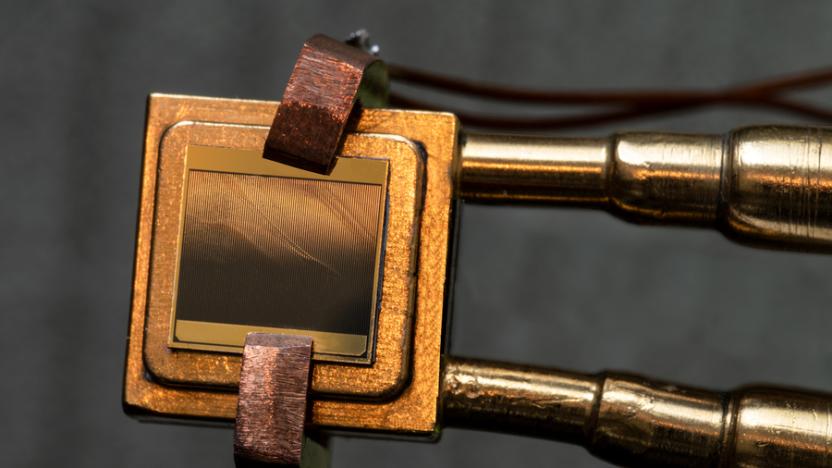steam engine
Latest

Thermophotovoltaic cell converts 40 percent of heat energy to electricity
Researchers have revealed a new thermophotovoltaic (TPV) cell that can convert heat to electricity with over 40 percent efficiency.

The Queue: More fun with timelines
Welcome back to The Queue, the daily Q&A column in which the WoW Insider team answers your questions about the World of Warcraft. Alex Ziebart will be your host today. Here we go again! rjjagoda asked: I continue to question what good blueprints would be to a society that simply does not have the technology, but that's a personal pet peeve. I mean, if I took iPhone schematics back to 1984, would Motorola be able to reproduce the thing? Or even understand some of the stuff they're looking at?

Valve launches Linux blog, officially announces Steam for Ubuntu
If bits of launcher script, photographic evidence and a short video weren't enough to convince you Valve was porting Steam to Linux, maybe you'll take it directly from the horse's mouth: Steam is coming to Ubuntu 12.04. Sick, perhaps, of denying the project, Valve has created a Linux blog to document its efforts -- outlining its history with the open-source OS and making its goals public. The plan is simple: get Steam ported to Linux with full functionality, optimize Left 4 Dead to run at a respectable clip with OpenGL and port additional Valve titles. The team is also asking for feedback, and hope to leverage the ideas of the community. Eager to put in your two cents? Check out the blog at the source link below. [Thanks, Andrew]

Lian-Li designs a moving train PC case, makes plugging in a challenge (video)
Lian-Li is a fan of odd-looking PC cases, but the boxes have usually had a tendency to remain stationary. The CK-101 takes away that one certainty: the design stuffs a fully functioning PC case with hard drive bays, a slim optical drive and USB 3.0 ports into an on-the-move model of a steam engine train. There's more than a few questions about how it works -- including whether or not it needs a battery to stay rolling, and just what's generating the 'steam' -- but it's already apparent from the video (below) that wired peripherals won't be much fun if you're chasing your computer down the tracks. There's a chance that Lian-Li will be selling a considerably more fixed-in-place version; we'll know more when the CK-101 is shown off at Computex in early June, where there will also be a show-specific, SUV-like Q15 case to sate your appetite for very literal car computers.

Steam for Linux captured on video, one step closer to reality
Yesterday, Phoronix had encouraging news about the prospect of Steam for Linux: photo evidence of Left 4 Dead running on Ubuntu 11.10 with AMD Catalysts drivers. Today, the site followed up with video footage of that same scenario, posting a hastily shot clip to show that Valve is indeed making progress -- slow as it may be -- on porting the game engine to Linux. Got 14 seconds? Check out the video demo below the break.

Researchers build world's smallest steam engine that could
Wanna create your very own microscopic steam engine? Just take a colloid particle, put it in water, and add a laser. That's a CliffsNotes version of what a group of German researchers recently did to create the world's smallest steam engine. To pull it off, engineers from the University of Stuttgart and Max Planck Institute for Intelligent Systems tweaked the traditional approach introduced by Robert Stirling nearly 200 years ago. In Stirling's model, gas within a cylindrical tube is alternately heated and cooled, allowing it to expand and push an attached piston. Professor Clemens Bechinger and his team, however, decided to downsize this system by replacing the piston with a laser beam, and the cylinder's working gas with a single colloid bead that floats in water and measures just three thousandths of a millimeter in size. The laser's optical field limits the bead's range of motion, which can be easily observed with a microscope, since the plastic particle is about 10,000 times larger than an atom. Because the beam varies in intensity, it effectively acts upon the particle in the same way that heat compresses and expands gas molecules in Stirling's model. The bead, in turn, does work on the optical field, with its effects balanced by an outside heat source. The system's architects admit that their engine tends to "sputter" at times, but insist that its mere development shows that "there are no thermodynamic obstacles" to production. Read more about the invention and its potential implications in the full press release, after the break.




